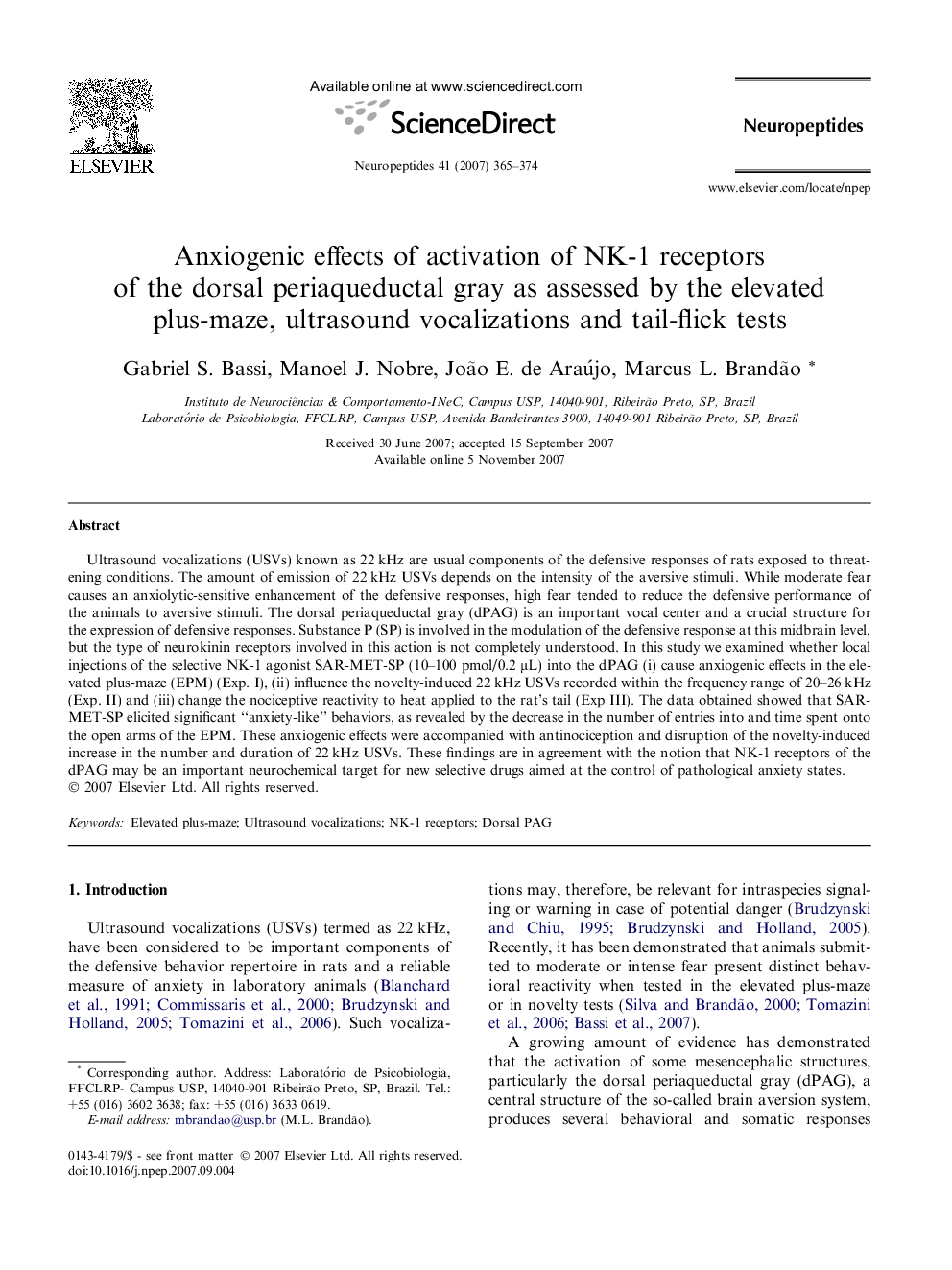| کد مقاله | کد نشریه | سال انتشار | مقاله انگلیسی | نسخه تمام متن |
|---|---|---|---|---|
| 2808637 | 1157801 | 2007 | 10 صفحه PDF | دانلود رایگان |

Ultrasound vocalizations (USVs) known as 22 kHz are usual components of the defensive responses of rats exposed to threatening conditions. The amount of emission of 22 kHz USVs depends on the intensity of the aversive stimuli. While moderate fear causes an anxiolytic-sensitive enhancement of the defensive responses, high fear tended to reduce the defensive performance of the animals to aversive stimuli. The dorsal periaqueductal gray (dPAG) is an important vocal center and a crucial structure for the expression of defensive responses. Substance P (SP) is involved in the modulation of the defensive response at this midbrain level, but the type of neurokinin receptors involved in this action is not completely understood. In this study we examined whether local injections of the selective NK-1 agonist SAR-MET-SP (10–100 pmol/0.2 μL) into the dPAG (i) cause anxiogenic effects in the elevated plus-maze (EPM) (Exp. I), (ii) influence the novelty-induced 22 kHz USVs recorded within the frequency range of 20–26 kHz (Exp. II) and (iii) change the nociceptive reactivity to heat applied to the rat’s tail (Exp III). The data obtained showed that SAR-MET-SP elicited significant “anxiety-like” behaviors, as revealed by the decrease in the number of entries into and time spent onto the open arms of the EPM. These anxiogenic effects were accompanied with antinociception and disruption of the novelty-induced increase in the number and duration of 22 kHz USVs. These findings are in agreement with the notion that NK-1 receptors of the dPAG may be an important neurochemical target for new selective drugs aimed at the control of pathological anxiety states.
Journal: Neuropeptides - Volume 41, Issue 6, December 2007, Pages 365–374